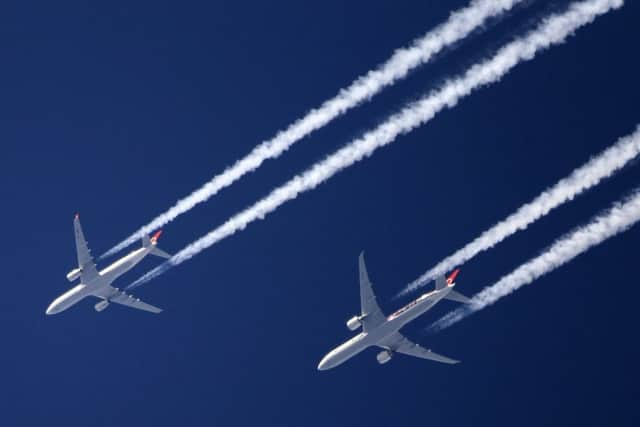How many trees would you need to plant to offset your holiday flight?


The analysis by freight firm 1st Move International found an 826-mile return flight between Edinburgh and Amsterdam would require one tree, compared to 19 for a 12,400-mile round trip to Ko Samui or Phuket in Thailand.
The company said it would cost between around £6 and £15 to plant each tree.
Advertisement
Hide AdAdvertisement
Hide AdHowever, Friends of the Earth Scotland (FoES) said most tree-planting schemes lacked credibility and people should fly less instead.
A separate survey showed the proportion of people who thought the pros of aviation outweighed the cons has fallen from 72 per cent to 67 per cent since last year.
Air traffic control firm Nats and research consultancy Savanta ComRes, which commissioned the poll, said: “It may be linked to people’s increasing concerns about air and noise pollution, and reflects the public’s growing environmental consciousness”.
However, the survey also showed only 37 per cent would be willing to paying an environmental levy for their flights.
Advertisement
Hide AdAdvertisement
Hide AdAmong the other most popular destinations from the UK, a 2,340-mile return trip from Edinburgh to Mallorca would require four trees and a 4,060-mile round trip to Tenerife would need six trees.
Further afield, a 6,480-mile return to New York would need ten trees, with the 7,180 miles to Dubai and back requiring 11.
Flying as far as Barbados, Punta Cana in the Dominican Republic or Orlando would need 13 and Las Vegas or San Francisco would need 15.
Other destinations from Edinburgh:
Albufeira, Benidorm, Ibiza: 4 trees
Crete, Lanzarote, Rhodes, Santorini: 6
Cancun: 14
Some of the tree numbers may be higher if connecting flights are required.
Advertisement
Hide AdAdvertisement
Hide AdEasyJet, Scotland’s biggest airline, has offset the carbon emissions from the fuel used on all its flights since November.
British Airways will do this on all its UK flights from this month.
Jack Limerick, director of web services at 1st Move International, said: “Everyone is aware that air travel has an impact on the environment, but from our research we found people struggled to picture exactly what this meant.
“To the average person, 0.16 tonnes of CO2 [the amount offset per tree] is a vague figure - there’s no way to know if that’s a lot or a little.
Advertisement
Hide AdAdvertisement
Hide Ad“So we wanted to visualise these numbers in a clear way that people would understand.
“When displayed like this, the results are both sobering and surprising.
“The fact we’d each have to plant up to six trees to offset a holiday to Spain is a shocking figure per person.
“Or to think the UK in total owes 3,017 football fields worth of trees to cover the 15 million visitors we send to Spain annually really put the scale into perspective.”
Advertisement
Hide AdAdvertisement
Hide AdTim Alderslade, chief executive of Airlines UK, which represents carriers operating here, said: “Carbon offsetting is one of the principal ways in which UK aviation can achieve net zero carbon by 2050, and we are encouraged by the progress being made.
“There is more that can be done, which is why airlines are investing billions in the newest, cleanest planes, and why a renewed partnership between industry and government to support sustainable aviation fuels – which have the potential to reduce emissions by 30 per cent - and airspace modernisation is so important.”
Nats said minor airspace improvements in 2016-17 had saved more than 55,000 tonnes of CO2 and there were larger-scale plans for the next few years.
But FoES director Dr Richard Dixon warned against offsetting schemes.
Advertisement
Hide AdAdvertisement
Hide AdHe said: “Flying is by far the most polluting way to travel.
“These figures show the big climate impact of just one long-haul trip and the massive cumulative impact of all the trips people make every year.
“We are in a climate emergency and the biggest contribution most people can make is to fly less or not at all.
“There are many schemes which offer to plant trees to absorb the carbon from flying but most of them lack credibility.
Advertisement
Hide AdAdvertisement
Hide Ad“To really make a difference, the trees planted would have to have a solid guarantee they would definitely not have been planted anyway.
“You’ve also got to be sure they’ll still be there in 30 years, which is hard in a world where climate change is creating the conditions for massive fires all around the world.
“The only sure way to reduce your carbon from flying is to not actually fly.”